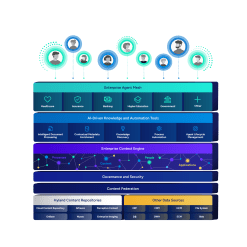Encapsulation
Encapsulation involves wrapping existing systems (i.e., legacy components or functionalities) within newer, modernized architecture — this means that only the interface layer is altered. The idea is that since new data and functions are applied using an external API, entire processes are still controlled via legacy systems.
This is a phased approach to modernization, but encapsulation doesn’t solve several of the problems companies are already facing when considering legacy system modernization, especially involving difficulties with maintenance, integration and upgrading.
Encapsulation also poses additional challenges, one being performance overhead. This actually increases computational resources (such as CPU, memory and network bandwidth) or time required by a system or application to execute additional tasks or processes. Instead of solving operational complexities, encapsulation adds to them as companies must maintain and manage the encapsulation layer on top of the legacy system.
Organizations may also become dependent on specific vendors or proprietary technologies to maintain the encapsulation layer, limiting flexibility and vendor choice.
Rehosting and replatforming
Rehosting and replatforming are alternate modernization strategies companies may consider.
Rehosting involves moving current applications from on-premises to a cloud or different hardware with minimal code changes, called “lift and shift.” This transfers applications and databases to the cloud and adjusts them to work in the new setting.
Replatforming has a similar approach, with an additional step known as “tinkering” (making minor adjustments like updating configurations, adjusting settings or optimizing code for better performance).
There are drawbacks to both approaches. Rehosting doesn’t address underlying issues and inefficiencies in application architecture. By simply migrating applications into a new environment, systems can still exhibit previous limitations such as performance bottlenecks, inflexible scalability and maintenance challenges.
Replacing
Many companies come to realize their legacy system must be replaced. Perhaps the solution can’t be encapsulated, rehosted or replatformed, or maybe it simply can’t meet requirements any longer.
Replacing legacy systems with completely new solutions would incorporate necessary features and functionality to meet your organization’s current and future needs, while also incorporating new capabilities not available on the old system, reducing long-term maintenance costs and significantly contributing to increased ROI.
Modern solutions enable organizations to incorporate the latest technologies, functionalities and features to address current business problems, providing an opportunity for companies to align their systems closely with their goals and objectives to support future growth.



















